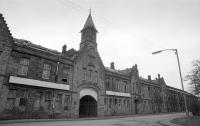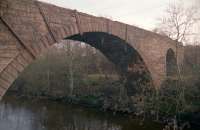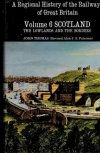Carron Company
Introduction
This company owned the Carron Iron Works, nearby mines and further flung lime works and coal mines. This works was the first major iron works in Scotland, using coal instead of charcoal. It was highly successful and even had a canon, the Carronade produced by the company for the Royal Navy, named for it. Examples can be found all over the former British Empire and even Afghanistan. The works also made prototype steam engines for [[James Watt]. Other products included stoves. The company owned a fleet of vessels operating on the Forth and Clyde Canal. The works had its own waggonway, railway and tramway systems. These connected the Carron Iron Works to the Forth and Clyde Canal and later the Stirlingshire Midland Junction Railway. The lines extended north to various collieries. A short portion of the line near Falkirk Camelon formed the first portion of the relief line to Grangemouth.
Dates
| 26/12/1760 | Carron Iron Works Carron Iron Works opens. Managed by Dr John Roebuck. Shareholders in the Carron Company were; Dr John Roebuck, Thomas Roebuck, Ebenezer Roebuck, William Cadell (Senior) and William Cadell (Junior) of Cockenzie (who owned pits at Tranent), John Cadell and Samuel Garbett. The works may even have been in blast in January 1761. |
| / /1765 | Carron Iron Works The Carron Company projects Duke Street in Glasgow as a direct route from Cumbernauld to Glasgow. |
| / /1766 | Carron Iron Works Carron Company tramway to Kinnaird and Carronhall collieries opened. |
| / /1767 | Carron Iron Works Carron Company tramway to Kinnaird and Carronhall collieries re-laid with iron rails from Coalbrookdale. |
| / /1773 | Carron Iron Works Dr John Roebuck sells his portion of the Carron Company due to financial difficulties in his flooded mines. |
| / /1802 | Charlotte Dundas, first practical steamship, on Forth and Clyde Canal Engine designed by William Symington and manufactured by the Carron Company. |
| / /1810 | Carron Iron Works Tramway (see Carron Company) to Bainsford Basin on the Forth and Clyde Canal opened, replacing an earlier navigable cut. |
Portions of line and locations
This line is divided into a number of portions.
Carron Iron Works Lines
This iron works was established in 1759. The works was able to produce iron from raw materials (notably using coke) and produce products such as cannons. Indeed the works was famous for its product the Carronade which was a form of cannon used until the 1850s. (At the entrance tower is a small display of cannon balls and cannons.)
...

...
Bill Roberton //1991

Ewan Crawford //2001
The level crossing of the line from the Carron Iron Works north and east to collieries was controlled by a privately owned signal box. This was of brick construction and two stories. ...
More details
Carron Iron Works to Canal Waggonway
This iron works was established in 1759. The works was able to produce iron from raw materials (notably using coke) and produce products such as cannons. Indeed the works was famous for its product the Carronade which was a form of cannon used until the 1850s. (At the entrance tower is a small display of cannon balls and cannons.)
...

...
Bill Roberton //1991

Ewan Crawford //2001
Carron Iron Works to Falkirk Railway
This was a double track junction. It was formed between the Stirlingshire Midland Junction Railway (1850)
...
See also
Stirlingshire Midland Junction Railway

Bill Roberton 30/05/2014
This canal basin, now infilled, was on the west/north bank of the Forth and Clyde Canal. It was connected to the Carron Iron Works with a tramway and was used for the delivery of coal to the works from the canal system, and export of iron products.
...
This was the junction between the railway to the Carron Iron Works and the later (1908) Bainsford Branch (North British Railway). The signal box was in the 'V' of the junction.
...
See also
Bainsford Branch (North British Railway)
This iron works was established in 1759. The works was able to produce iron from raw materials (notably using coke) and produce products such as cannons. Indeed the works was famous for its product the Carronade which was a form of cannon used until the 1850s. (At the entrance tower is a small display of cannon balls and cannons.)
...

...
Bill Roberton //1991

Ewan Crawford //2001
Distant mines and works
The Banton and Kelvinhead Collieries were worked by the Carron Company. Coal from these collieries was taken south by the Banton Tramway to Kelvinhead Quay and then east along the Forth and Clyde Canal to the Carron Iron Works.
...
See also
Banton Tramway

John Furnevel 17/02/1970

Ewan Crawford //1999
Books






